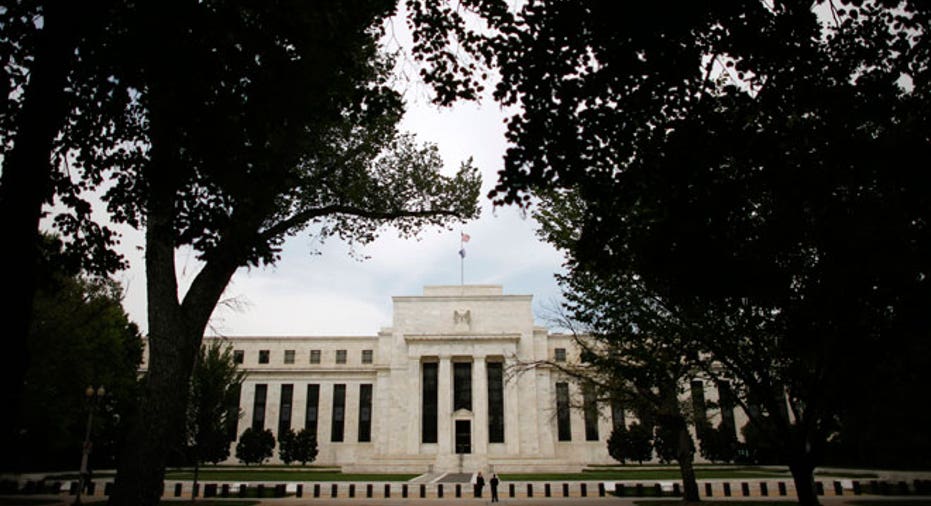Fed Holds Steady on Policy

The Federal Reserve on Wednesday kept its foot on the easy-money gas pedal, maintaining its stimulus programs at their current levels in the face of a rash of economic headwinds.
Yet despite recent sluggishness in labor and housing markets, among other economic bellwethers, the Fed, choosing to highlight the positive, kept alive the chance of a December tapering of its massive bond purchase program known as quantitative easing.
That possibility moved to traders to sell off stocks, pushing the major averages down following the 2 p.m. release of the Fed’s statement. The Dow Jones Industrial average was down 90 points at 2:30 p.m.
Wednesday’s move – or lack of a move – was widely expected, unlike last month’s surprise decision to hold off on reducing the Fed’s $85 billion monthly asset purchases.
The Fed had telegraphed for months the likelihood of scaling back its bond purchases beginning in September, then backed away citing, among other things, the strong possibility of a government shutdown and potential U.S. default in October due to political strife in Washington, D.C.
While a default was averted a partial shutdown was not, and the economy – and by extension the Fed -- is now dealing with the consequences.
In its statement, the Fed said “fiscal policy is restraining economic growth.”
Other parts of the statement reflected policy maker’s belief that a return to sustained growth is imminent. “The Committee expects that, with appropriate policy accommodation, economic growth will pick up from its recent pace and the unemployment rate will gradually decline toward levels the Committee judges consistent with its dual mandate,” the statement read.
“What the Fed has to do now is gauge the state of the economy post-government shutdown,” said Greg McBride, senior financial analyst for Bankrate.com, ahead of the Fed’s 2 p.m. announcement.
The need for that assessment tabled any chance that the Fed would begin tapering in October, according to McBride.
McBride said the 16-day partial shutdown, which furloughed 800,000 Federal employees and harmed countless private businesses directly impacted by the closures, is forcing the Fed to play catch up on economic data that wasn’t released during the shutdown.
For instance, the release of the September jobs report by the Labor Department, scheduled for Oct. 4, was postponed by the shutdown until last week. And then it disappointed, revealing an anemic 148,000 jobs were created last month.
The September unemployment rate ticked lower to 7.2% from 7.3%, but once again the drop was caused by thousands of Americans leaving the workforce out of frustration with their inability to find a job. September’s labor force participation rate held steady at 63.2%, the lowest rate in four decades.
Economists have speculated the shutdown could have a significant negative impact on the October labor numbers.
“It will likely take another full month of economic data in November before the Fed can get a true read on what, if any, damage fiscal policy has done to the economy,” said McBride.
Indeed, the headwinds that have emerged since summer led to predictions ahead of the Fed’s announcement that an increase in asset purchases might be in the cards. Analysts at investment bank Societe Generale raised the idea of the Fed boosting bond purchases in a note to clients last week. “Although we assign a very low probability to a decision by the FOMC to increase asset purchases at its October meeting, it is not a possibility we can ignore,” the analysts wrote.
The next meeting of the policy setting Federal Open Markets Committee is scheduled for mid-December.
Still, the weak September jobs report combined with softening housing data and less-than-stellar third quarter earnings has most analysts convinced that a decision on tapering will likely not come until early 2014.
“While the statement sent a message of reassurance that the economy was set to rebound from its recent bout of weakness, it seems likely that the Fed will need to wait several months before the picture clears sufficiently, meaning no tapering of the stimulus programme until next year,” said Chris Williams, chief economist at research firm Markit.
That’s bad news for Americans trying to find a job, but good news for investors. Stock markets have surged since the recent recession ended in 2009 as investors have gorged on excess cash created by the Fed’s easy money policies – namely quantitative easing and near-zero interest rates.
Conversely, investors have initiated sharp pullbacks whenever the Fed has hinted in the past that its stimulus policies won’t last forever.
Consider: the Dow Jones Industrial average has closed at record highs 32 times since early March of this year, most recently on Tuesday. And the broader S&P 500 notched its 33rd record this year in Tuesday’s session.
The problem with this, as many economists have noted, is that the markets are rising despite the sluggish economic growth and stubbornly high unemployment, a situation that strongly suggest that much of the Fed’s stimulus is finding its way into assets such as stocks rather than capital expenditures that would stimulate growth and create jobs.
Indeed, policy hawks (those who oppose continued stimulus), including several members of the FOMC, have warned that endless stimulus will eventually lead to runaway inflation and asset bubbles.
That’s a topic sure to be raised next month during Fed Vice Chair Janet Yellen’s Senate confirmation hearings to name a replacement for current Chair Ben Bernanke, who is stepping down Jan. 31 after serving two terms.
The bull market in stocks has coincided with an unprecedented ballooning of the Fed’s balance sheet, from less than $1 trillion in 2008 to over $3.7 trillion today. At the same time, the Fed has held interest at a record low range of 0%-0.25% since December of 2008.